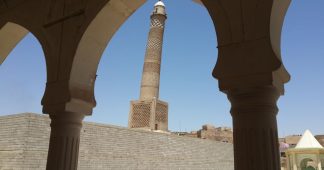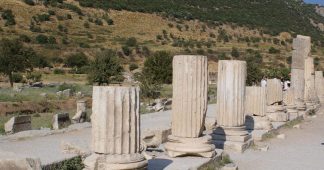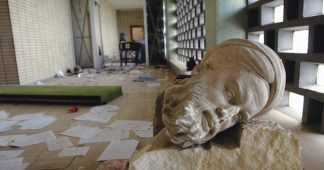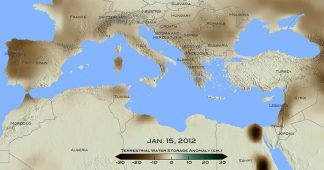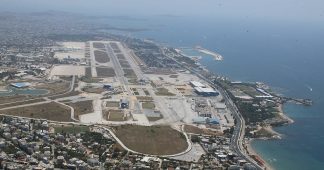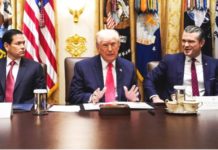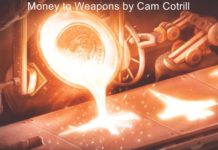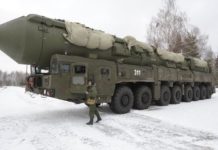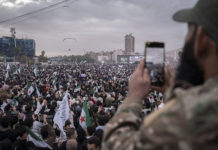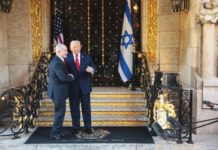By Jordan Florit
f2.telesurtv.net
In a blatant streak of imperialist historical revisionism, over the course of 37 years, Bingham would whitewash from history those who had walked before him.
On July 24, 1911, Hiram Bingham, as he would unequivocally state in his 1948 book “Lost City of the Incas,” “discovered” the ancient Incan ruins of Machu Picchu. But he didn’t, and even he knew it.
Arriving in Cusco in June 1911, Bingham and his expedition team paid local guides to help them in their quest to find the “lost” Inca city. On July 24, Bingham arrived amidst beautiful stone-built structures that now host over one million tourists a year, six centuries after it was first constructed by the Ninth Sapa Inca Pachacutec.
Bingham deceptively hid the fact that there were already numerous Peruvian farmers who had settled among the ruins and took photos from angles that not only omitted them but focused on the parts of the ancient citadel that remained untouched. In doing so, his published photos saw him as the discoverer and led the National Geographic Society to sponsor a return trip. As a result, they devoted an entire issue to Bingham’s “discoveries.”
In 1952, when Che Guevara visited Machu Picchu with his travel companion Alberto Granado, his growing desire to liberate his continent was compounded by the conditions he saw the local Indians were subjected to in comparison to those of the North American tourists. “Naturally the tourists who travel in their comfortable buses would know nothing of the conditions of these Indians … the majority of the North Americans fly directly from Lima to Cuzco, visit the ruins and then return, without giving any importance to anything else.”
The Argentine Revolutionary returned a year later and this time he produced an article for the publication Siete, in which he vented his anger at the plundering of Peru’s ancient settlement. “Here comes the sad part. All the ruins were cleared of overgrowth, perfectly studied and described and totally robbed of every object that fell into the hands of the researchers, who triumphantly took back to their country more than 200 boxes containing priceless archaeological treasures. Where can one go to admire or study the treasures of the Indigenous city? The answer is obvious: in the museums of North America.”
And so it was: between 1911 and 1915, through legal means as well as illegal methods, Bingham systematically drained Machu Picchu of its artifacts and remains. Legally, through a binding contract stating the antiquities were to be returned if Peru so request and only items excavated before 1913 could be exported, Bingham removed 136 wooden crates’ worth of excavation. Among them were 107 disentombed graves and 173 skeletal remains, including all that was buried with it, such as ceramics, tools, and other offerings.
Neither clause was respected.
Peru first requested the items be returned from Yale University in 1918, where they were prominently on display. Yale ignored the request. Two years later, this time through their consulate in the U.S., Peru tried again.Some 47 boxes out of the original 136 were returned, many of which were described as duplicates. It wasn’t until 2010, and with the threat of legal action, that Yale finally agreed to honor the contract they signed nearly a century ago and by 2012 all items legally exported were returned.
Unfortunately, but not surprising, with the acquiescence of Yale, a further US$480,000 worth of artifacts were smuggled out of Peru by Bingham and to this day sit on display or in waiting at the University’s Peabody Museum. Snuck out in secret and with no inventory ever recorded, Peru has been unable to enforce their return.
Much more would have been looted by Bingham, had it not been for Peruvian officials unsatisfied with his claim of carrying out “geographical surveys.” The local press was indignant in its headlines, “The Criminal Excavation of Machu Picchu, Members of the Yale Commission are Taking our Treasures,” and officials found Bingham with a further 74 crates full of bones and artifacts, bringing a brisk end to his expedition.
Perversely, in 1948, a plaque bearing his name was placed at the site, reading, “Cuzco is thankful to Hiram Bingham, the scientific discoverer of Machu Picchu.” It is still there today, as is the Hiram Bingham Highway, which leads up from the valley to the ruins. There is nothing to be thankful for.
As Che said in 1953, “Let us be content then, with giving the Incan city its possible significance: for the fighter who with a voice of stone shouts with continental reach, ‘Citizen of Indoamerica, reconquer the past.'”
